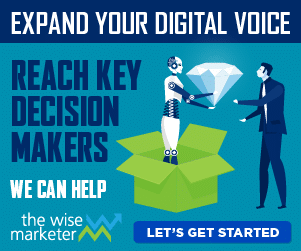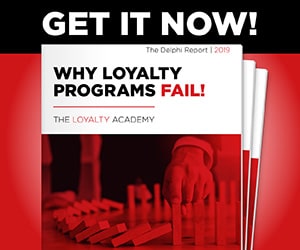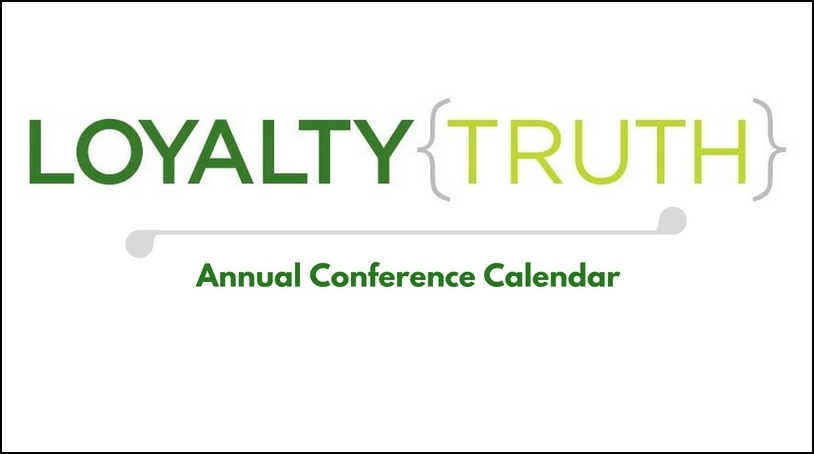Customer Engagement is a popular term that some marketers would like to convince you to substitute for Customer Loyalty. Through my experience the two concepts are not substitutes for one another, nor are they mutually exclusive. Instead, the two are tightly integrated. With that premise in mind, let’s take a closer look at where the two concepts intersect.
Stimulating Customer Engagement is necessary to achieve Customer Loyalty. Through operating dozens of programs over the years, we discovered that intensely loyal consumers are almost always actively engaged with your Brand, while customers considered “engaged” are many times anything but “loyal”.
Customer Engagement is often represented as something that can or should be accomplished as a standalone goal. I prefer to think of Customer Engagement as a continual process that merits investment from your brand across a spectrum of opportunity. Nurturing customers through increasing degrees of “Engagement Intensity” will result in the valuable, loyal customers that most Brands seek.
Engagement is an interesting term to define.
The dictionary definition carries both mundane and romantic overtones. The two definitions that caught my attention are:
- An arrangement to meet or be present at a specified time and place, e.g. a dinner engagement .
- Emotional involvement or commitment .
The first definition refers to a singular event, a moment in time, even just a transaction. The second definition implies a more significant degree of durability, implies intent, and suggests that a single interaction has potential to develop into a long-term relationship.
In my work, I have been surprised to find the intersection between Customer Engagement and Loyalty does not occur at a single point on a grid. Instead, Loyalty structure, incentives and best practices can be applied across 5 Phases of Customer Engagement to generate a continual flow of loyal customers from your broader customer universe. Here is a quick overview of the each step in the process with an accompanying Loyalty Tip to illustrate where the intersection exists.
Integration of Customer Engagement and Loyalty
Let’s start our search for the intersection of Customer Engagement and Loyalty with this basic question: Why would anyone engage with your brand in the first place?
1. Shared Interest
The naked truth is that a brand cannot force engagement onto its customers. Where there is no spark of interest between two parties, the chance of developing a meaningful relationship is slim. Lead generation campaigns, content marketing, social media activity and traditional advertising (both online and offline) will build awareness and stimulate trial, but there must be a fundamental shared interest between the customer and the brand for engagement to flourish.
The reality of shared identity between customer and brand is key to determining if a future relationship will develop. For example, I may only be interested in investigating options among wetsuits because I’m planning for a few triathlons this year where wetsuits are recommended. While I might drink an energy drink twice a day, I will only truly engage with a specific brand if I personally identify with the epic nature of the stunts their spokespeople demonstrate on commercials and videos.
Loyalty Tip:
- While you carry-on with outbound lead generation and content marketing, don’t be afraid to invest in rewards and incentives that can be sprinkled to encourage onboarding activities leading to first purchase transactions.
- Even consumers who have a visceral interest in your brand may need a push to raise their hand and give you a try. Will you make early interaction with your brand memorable enough to win some mind share with the customer?
2. Opportunity
Where a demonstrated level of Shared Interest is in play, your brand has an opportunity to drive deeper engagement with interested customers. Many customers will make a return visit or second purchase, and brands can build on these encounters by executing well in the area of merchandising, pricing strategies, bundled services (e.g. free shipping on your website) and customer service.
If the customer does not truly self-identify with the brand, they will probably remain transactional. As an example, I might have found the pair of jeans I was looking for at your website because they were on sale and came with free shipping, but the relationship might end right there. If I’m not a jeans fanatic and just intermittently shop for clothes when I see them on sale, prospects for moving into a more significant level of engagement with the brand are weak. On the other hand, if I am a clothes-horse and fall in love with your brand values, the causes you support, and am fond of sporting your logo, I’ve got the potential to become more heavily engaged.
Loyalty Tip:
- Consider the recognition element of successful loyalty programs to drive further engagement. Offering value-added benefits to a purchase (e.g. free or expedited shipping) or taking the time to learn more about individual customer preferences is an effective way to recognize patronage and show that you care for each customer.
3. Magnetism
For those customers who demonstrate Shared Interest and have taken advantage of Opportunities you have provided, there is now a unique chance for your brand to create a more meaningful relationship with longer term potential by establishing an aura of Magnetism with the customer. Whether accomplished through a curiosity approach or a more direct “attraction” approach, your brand can communicate in multiple channels to intensify the relationship.
Continuing with the example above, if I’m a jeans fanatic and bought a pair from your e-commerce site, what might I do next? The answer depends on the level of magnetism you create through follow-up communications. Will your content marketing strategy bring your brand promise and corporate values to life? Will you invite me to follow a blog or community to share stories about how the product has helped people save time, money, or satisfy a need?
Hammer Nutrition provides a wonderful example of how an online brand can move trial customers into a more heavily engaged state through content marketing. The online retailer provides high-quality fuels and nutritional products for endurance athletes. Visiting their website, it is clear they have a point of view on how to lay a foundation for optimal race-day performance. That point of view is made practical by publishing a large volume of content (i.e. nutrition guides, product information, case studies, industry research) available for consumption.
Loyalty Tip:
- Creating a Community for enthusiasts, or just those customers who want to learn more, is an effective way to establish a deeper level of buy-in to your brand.
- While informing customers how to make the best use of your products, be sure to reinforce product quality and open up VIP or Ambassador programs for those who are gaining confidence in your brand. Are you counseling your customers on how to gain maximum benefit from your products?
4. Perceived Value
With success comes responsibility. Hooking customers through the Magnetism created by your content marketing or other strategies raises expectations. With the plethora of choice available in today’s retail markets, even those customers who identify with your brand and have built some trust will continually evaluate the perceived value of future patronage.
The level of perceived value your brand can create with its customers is essential to retaining interest and deepening engagement. High-perceived value can be created by leveraging both price and quality, though probably not at the same time. Two examples:
- Monoprice.com meets most of my needs for techie products and gadgets. The items I buy may not be the trendy stuff of drones and voice-activated assistants, but finding the essential office tech products I need at unbeatable prices creates high perceived value for me with this e-retailer.
- In the case of Hammer Nutrition, quality products come at a price. For the consumer who views the use of quality nutritional supplements as an “investment” in their body and a tool to reach their goals, a price premium is justified.
Loyalty Tip:
- Whatever the path to establishing high-perceived value in a brand relationship, doing so will make it more difficult to sway customer attention to another retailer, online or offline.
- Taking time to communicate your brand strength and product positioning through your loyalty communications will reinforce the value you deliver.
5. Relationship
In Marketing terms, the definition of “relationship” is a trusted exchange between brand and customer that opens the door to greater frequency of interaction, higher value, satisfaction, and customer loyalty. Every successful relationship is built on trust. Customers who have navigated this far across the 5 Phases of Customer Engagement and enter into a relationship are here to stay – unless you somehow mess it up.
The customers who remain active with your brand at this stage have the highest potential to become your most valuable over an extended period of time. Brand Ambassadors will rise from this group to generate advocacy through word of mouth marketing, referral, and recommendation – each traits that are highly valued by Brands everywhere.
Loyalty Tip:
- Structure is helpful to maintain a relationship, and a more formal, opt-in based customer club or loyalty program provides the structure needed to identify, maintain and grow most valuable customers.
- Every brand needs a well-executed customer strategy, though not all need a loyalty “program”. Offering a packaged set of tangible and recognition benefits will cement new relationships and propel some customers into a higher sphere of profitability.
Building on Customer Engagement to achieve Loyalty
Today, each brand must carve its own path towards achieving greater levels of customer loyalty. If you noticed, the Loyalty Tips suggested were composed of a wide range of options, some outside of so-called traditional loyalty program approaches. Mixing temporary incentives, recognition benefits, community building, brand leverage, and formal loyalty program structure will yield best results.
Evaluating how you will generate Customer Engagement in your business should be done under the umbrella of your Customer Loyalty Strategy. This approach does not imply that you are committing to a formal currency-based program. It does mean that you should reevaluate what is now a legacy approach of isolating loyalty rewards as deferred rebates. Your willingness to invest earlier in each customer relationship will help you achieve multiple business objectives while raising customer satisfaction scores with your Brand.
For a deeper dive into the Intersection of Customer Engagement and Loyalty, please join me for an upcoming course on the subject at the Loyalty Academy. You can find dates and times for this and other courses by visiting LoyaltyAcademy.org.




